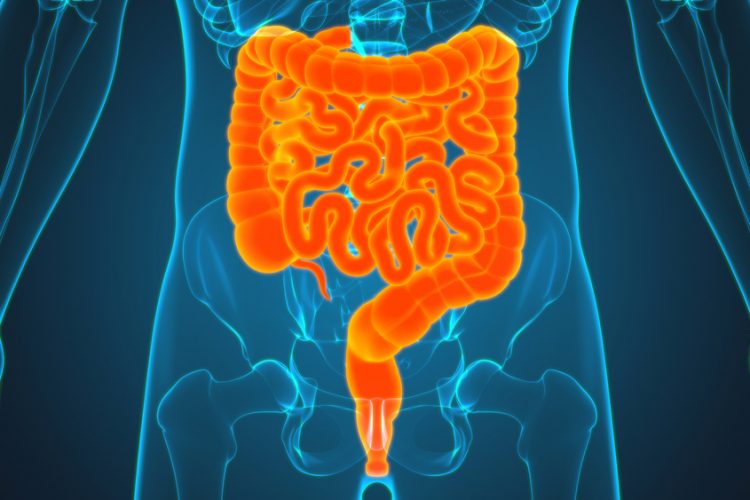Stelara® “a compelling option” for the treatment of Crohn’s disease
Posted: 24 May 2021 | Hannah Balfour (European Pharmaceutical Review) | No comments yet
Janssen has released abstracts for four studies evaluating Stelara® (ustekinumab) in Crohn’s disease (CD) and ulcerative colitis (UC).


The Janssen Pharmaceutical Companies of Johnson & Johnson have released new efficacy and safety data for Stelara® (ustekinumab) in Crohn’s disease (CD) and ulcerative colitis (UC), including data from the first head-to-head study of biologic therapies in patients with CD (the SEAVUE study).
SEAVUE study enrolled 386 patients with moderately to severely active CD and randomised them 1:1 to receive Stelara approximately 6mg/kg intravenous (IV) at baseline, then 90mg subcutaneous (SC) every eight weeks; or treatment with adalimumab 160mg SC at baseline/80mg SC week two, then 40mg SC every two weeks.
Overall, there were no significant differences in outcomes for Stelara and adalimumab. With regards to the study’s primary endpoint, 64.9 percent of Stelara-treated patients and 61 percent of adalimumab-treated patients achieved clinical remission. In terms of secondary endpoints 60.7 percent of Stelara-treated patients and 57.4 percent of adalimumab-treated patients achieved corticosteroid-free remission; 72.3 percent of Stelara-treated patients and 66.2 percent of adalimumab-treated patients achieved clinical response; and 56.5 percent of Stelara-treated patients and 55.4 percent of adalimumab-treated patients achieved patient-reported outcome (PRO)-2 symptom remission.
Benefits for both treatments were also demonstrated across additional efficacy endpoints but did not demonstrate statistically significant differences. The safety results were similar for both treatments, though discontinuation rates were lower for Stelara-treated patients (15.2 percent) versus adalimumab-treated patients (23.6 percent). Among Stelara-treated patients and adalimumab-treated patients, 6.3 percent and 11.3 percent had adverse events (AEs) that led to discontinuation of study drug, respectively.
“Until now, there have been no head-to-head trials comparing the safety and efficacy of prescription biologics to treat Crohn’s disease, a chronic condition that can cause persistent and debilitating symptoms which can have a profound impact on a person’s daily life,” said Dr Andrew Greenspan, Vice President, Immunology Medical Affairs, Janssen Scientific Affairs, LLC. “Armed with this new clinical trial data, doctors have a compelling option in Stelara for appropriate patients living with Crohn’s disease.”
The company is also revealed pooled safety data from six Phase II/III studies in CD patients (through five years) and UC patients (through two years) treated with Stelara (2,575 patients with 3,960 patient-years [PYs] of follow-up) and placebo (1,390 patients with 916 PYs of follow-up). Results showed the Stelara safety profile was favourable and consistent with the previously reported safety profile in inflammatory bowel disease patients through one year and the well-established safety profile across all approved indications for Stelara.
The company also revealed the results of the long-term extension of the IM-UNITI placebo-controlled maintenance study showed treatment with Stelara 90mg every 12 weeks (q12w) or eight weeks (q8w)was effective at maintaining improvements in health-related quality of life (HRQoL) through five years (252 weeks) that were first achieved during Stelara induction therapy in patients with moderately to severely active CD. The percentage of patients who achieved clinically meaningful improvement in Inflammatory Bowel Disease Questionnaire (IBDQ) total score at week 252 was 40.8 percent for Stelara 90mg q12w and 43.2 percent for Stelara 90mg q8w. Clinically meaningful improvement was also observed for both Stelara regimens in Medical Outcomes Study 36-Item Short Form (SF-36) Physical and Mental component summary [PCS and MCS] scores. SF-36 PCS scores were: Stelara 90mg q12w, 37.5 percent; 90mg q8w, 37.7 percent. MCS scores were: Stelara 90mg q12w, 33.9 percent; 90mg q8w, 31 percent during the same period.
The final abstract released by Janssen shows the real-world effectiveness of Stelara in the Treatment of CD. The real-world, retrospective, multi-centre, consortium study evaluated cumulative rates of clinical and endoscopic remission of Stelara in a total of 1,113 patients with CD. Results showed 40 percent of patients achieved clinical remission through 12 months. Cumulative rates of steroid-free, endoscopic and radiographic remission at 12 months were 32 percent, 39 percent and 30 percent, respectively. Rates of clinical and endoscopic remission were lower with an increasing number of prior biologic exposures. Notably, the greatest treatment effect of Stelara was seen in biologic-naïve patients with 63 percent and 55 percent of patients achieving clinical and endoscopic remission, respectively, by 12 months.
Related topics
Biologics, Clinical Trials, Drug Development, Drug Safety, Research & Development (R&D), Therapeutics
Related organisations
Related drugs
Related people
Related diseases & conditions
Crohn's disease (CD), Inflammatory Bowel Disease, Ulcerative colitis (UC)









